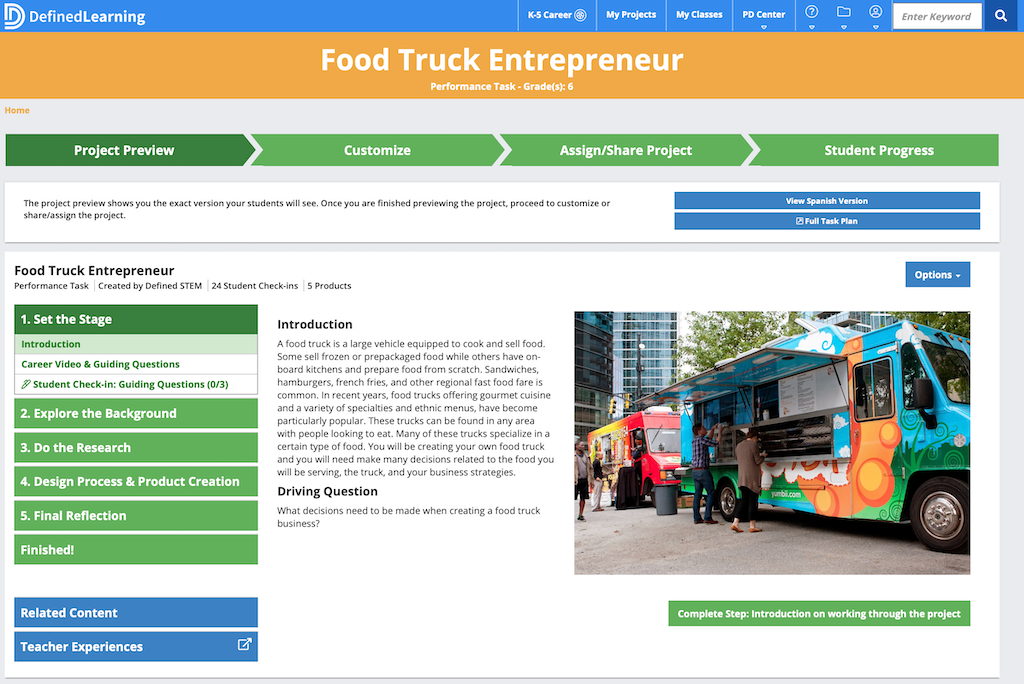
Defined Learning uses performance tasks as the foundation for the student’s learning experience, including a variety of resources to support this process. Most teachers choose to do 2-4 performance tasks per year with their students.
Set the Stage: Each Defined Learning task connects with the real-world through the use of career relevant situations. As we open a task we see the first section: Set the Stage. This section includes an Introduction, highlighting what is to be accomplished, and the role the student will assume throughout the task. Each task has a Career Video so the student can learn about this career and the context for their work. Guiding questions are included to help students view the video with a purpose. The students can then reflect on what they have seen in the video and brainstorm how it will connect with their objective.
Explore The Background: The next section is “Explore the Background.” This section contains the performance task. Defined Learning utilizes the GRASP template from Understanding by Design (Insert GRASP slide). The acronym GRASP stands for Goal, Role, Audience, Situation and Products (Back to software video highlighting the same task). As we look at this task, you can see the real-world connections highlighting the career, the goal, and the audience that will be addressed throughout the performance task.
Products: Each task contains a number of potential products for student work. The vast majority of teachers choose between one and three products for completion. If you are new to project-based learning, selecting one product is a great way to get started. We will talk more about the products in the next module.

